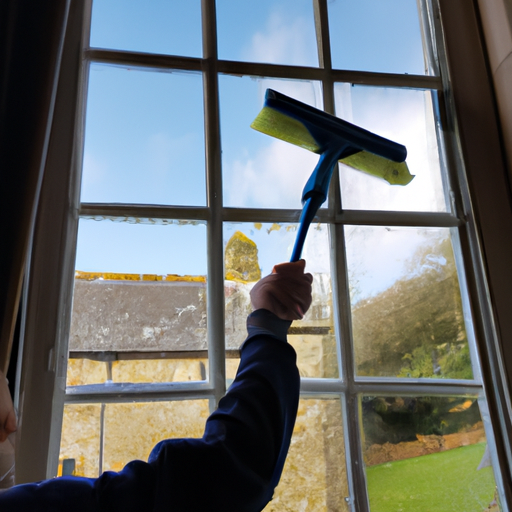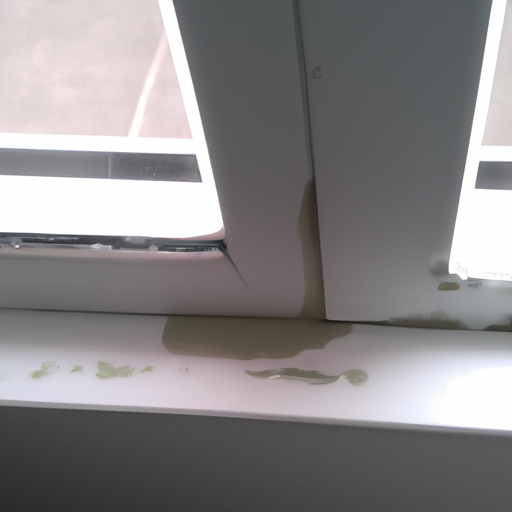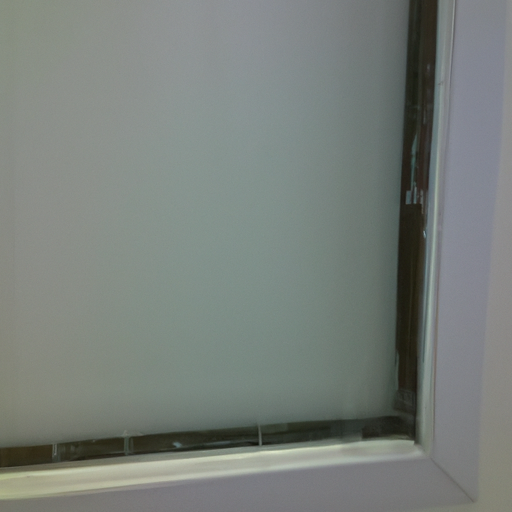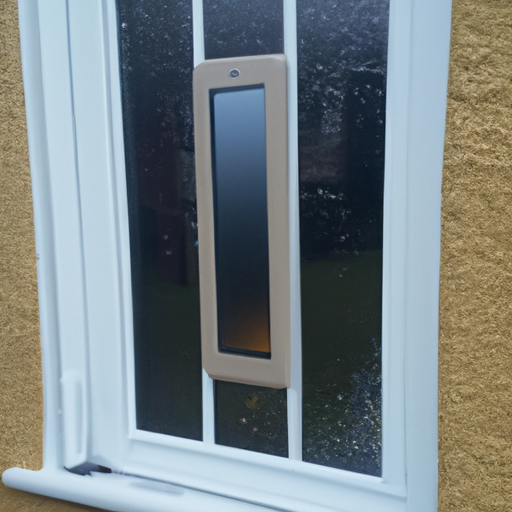
Maintaining Listed Windows in Somerset: A Yeovil Guide
Ever tried cleaning a period sash or leaded-light window and worried you’d knock loose a century of history? And yet, in Yeovil, Somerset, those old panes aren’t just glass—they’re stories stitched into the fabric of a town that’s part of the South West England picture. So, if you’re responsible for a listed building in Yeovil or nearby places like Sherborne, Crewkerne, Ilminster, Martock or Somerton, you’ll want a plan that respects conservation needs as much as it does a streak-free finish. Here’s a neighbourly, practical guide from a Yeovil window cleaner who’s spent years looking after historic windows in this part of Somerset."
Why listed windows require extra care in Yeovil
In towns across South West England, many homes and public buildings boast original putty, fragile glazing bars, and decorative glass that’s stood since the Victorian era or earlier. Cleaning these features isn’t about chasing a quick shine; it’s about minimising risk to the glass, the frames, and the building’s historic character. In Yeovil, the Conservation Officers at South Somerset District Council and historic property owners often expect a method that aligns with guidance from organisations like English Heritage and the local planning framework. And yes, that does mean you might need Listed Building Consent if you’re proposing changes that affect appearance or structural elements.
- Leaded lights and old putty: Some panes may have historic lead cames or putty that softens with cleaning. Aggressive scrubbing or high-pressure methods can loosen putty, crack glass, or disturb delicate cames.
- Subtlety over speed: A quick wash with strong chemicals or power washing can remove decades of patina and insulation. In a listed building, that patina is part of the value.
- Conservation expectations: In Yeovil and the surrounding villages, conservators often prioritise repairs that preserve original features over replacement with modern, less characterful alternatives.
If you’re reading this from Sherborne or Somerton and you’ve got an old manor or a church front, you’ll want to keep the historic look while meeting modern safety standards. This is where a specialist approach makes all the difference.
Cleaning approaches that respect history
So, what does a conservation-minded window clean look like? It starts with assessment and ends with a finish that respects the fabric of the building.
- Pre-clean assessment: We look at sashes, timber frames, leaded lights, and putty. We check for cracked panes, loose putty, or damaged glazing bars. If a window has been recently restored or altered, we note the techniques used so our cleaning doesn’t undo that work.
- Gentle cleaning methods: We use soft brushes, microfiber cloths, and non-abrasive detergents applied by hand. For fragile glass or creased leaded sections, we damp-wipe and rinse with care rather than scrubbing.
- Pure water where appropriate: For historic frames, especially painted timber, we often rely on purified water fed systems to prevent mineral deposits without chemicals. This is kinder to old finishes and reduces staining risk on lime plaster nearby.
- Avoids high-pressure and aggressive chemicals: Pressure washers, strong solvents, or caustic cleaners are out of the question on listed properties. We train staff to recognise when a gentler touch is needed and how to adapt the method accordingly.
- Temperature and humidity thinking: In Somerset’s temperate climate, we pick days with stable conditions. And yes, that means waiting out a damp spell or frost if risk to panes or putty is high.
You’ll notice the difference when you see a clean window that still looks like it belongs to the building—no modern sheen, just well-preserved character.
Tools, techniques and local know-how from Yeovil
In Yeovil, our toolkit for listed buildings is deliberately restrained and precise:
- Hand-cleaning and soft brushes: The bread-and-butter for sensitive surfaces, including sash windows and leaded lights.
- Lead-safe handling: If there’s a likelihood of lead paint, we use non-abrasive cleaning and avoid disturbing the paint layer. When necessary, we follow lead-safe work practices and consult with the property owner about options.
- Gentle wash technology: We may employ controlled damp wiping, followed by careful drying to avoid watermarking on historic glass.
- Ladders and access plans: We follow Safe Working at Height Regulations and use stabilisers, edge protection and, where practical, access equipment that doesn’t risk historic features. This is especially important for tall town centre properties in Yeovil’s Market Place or around the old railway bridges near the town river.
- Documentation: For listed buildings in Yeovil, we document the condition before and after cleaning. This helps with any future conservation reporting and ensures continuity with local guidelines.
We also lean on local knowledge: Montacute House, a bit outside Yeovil, is a good example of how the landscape and conservation mindset shape window care in Somerset. Nearby historic pockets in Sherborne or Somerton share similar concerns, so the approach here is deliberately anticipatory rather than reactive.
Seasonal considerations for Somerset windows
Somerset’s weather isn’t dramatic in a Hollywood sense, but it’s totally capable of catching you out if you’re not prepared.
- Spring: Pollen and algae can accumulate on sills and glass. A gentle clean can prevent staining, but we watch for condensation inside frames that indicates ventilation issues rather than dirt alone.
- Summer: Warmer days are ideal for controlled cleaning, but heat can cause rapid drying and potential spotting if not done carefully. We pace cleaning to avoid water spotting on older glass.
- Autumn: Leaves and damp air increase moss and mineral deposits on external sills. We recommend a light clean and removal of leaf litter from the sill line; this reduces moisture retention against painted timbers.
- Winter: Frost and humidity can affect putty and timber. If the window is in a high-stress area (exposed gable ends or near the coast), we’ll schedule for milder days and ensure ladders and ropes are secure. And yes, we’ll avoid any cleaning that could expose workers to icy surfaces.
All of this matters in Yeovil, and it matters even more when your property is part of a Conservation Area or a Grade listing. The seasonal approach protects both historic materials and the people performing the work.
Practical tips for owners and managers of listed buildings
If you’re thinking about organising cleaning for a listed building, here are some concrete steps worth following:
- Plan a year ahead: Historic windows benefit from regular, light cleans rather than infrequent, heavy scrubs. A quarterly light wipe can prevent heavy deposits and reduce the risk of damage.
- Build a maintenance log: Record what you’ve cleaned, what products were used, and any notes on the condition of putty, sashes, or decorative glass. This helps with long-term conservation.
- Engage with local conservation officers: When in doubt, contact South Somerset District Council’s conservation team. They can advise on whether a project needs Listed Building Consent or what methods are preferred for your property type.
- Choose a specialist with historic experience: Look for a Yeovil window cleaner who lists experience with listed buildings, Georgian windows, and leaded-light panels. It’s not just about a sparkling window; it’s about preserving the fabric.
- Keep the neighbours in the loop: In tightly spaced Georgian terraces or near Yeovil’s historic lanes, coordinating with owners of adjacent properties reduces risk to neighbouring windows and helps everyone stay compliant.
For homeowners or landlords in Sherborne, Ilminster, or Martock who manage period cottages or townhouses, these steps are especially helpful. They’re not just good practice—they can save you from a myriad of potential headaches down the line.
Case study in a real Yeovil context
A practical example of how this works in the real world is our work on a listed manor house near Yeovil town centre. We approached the exterior windows with a conservation-first mindset, avoiding pressure washing on the sills and cames, and using a gentle hand-clean with filtered water for the glass. The result was a clean, clear view that still looked like it belonged to the building’s era—no modern sheen, just respectful restoration. You can read more in this related piece: Case Study: Restoring a Listed Manor House in Yeovil.
This approach mirrors the guidance laid out in articles such as Preserving Historic Yeovil Windows: Practical Care Guide and ties into broader discussions about seasonal storm readiness in October Storm-Proofing: Window Care for Listed Yeovil Buildings.
If you’re curious about how we handle access challenges for listed properties, you might also enjoy our related post on window access cases and solutions. It’s a helpful companion to planning, especially if your Yeovil home has multiple elevations or quirky architectural features. Here’s a related read: Case Study: Solving a Church Window Access Challenge in Yeovil.
And if you’re thinking about the broader picture—how often to clean, what tools to trust, or how to balance cost with care—you’ll find valuable context in our general blog hub: the blog.
Safety, compliance and best practices for listed buildings
- UK health and safety regulations: We comply with the Health and Safety at Work Act 1974 and subsequent guidance. For work at height, we follow Safe Working at Height Regulations 2005 and maintain a formal risk assessment for each site.
- Conservation considerations: We liaise with local conservation officers and, if needed, obtain consent before making changes that affect the historic character of windows or façades.
- Handling older glass and frames: When dealing with sash cords, putty, or leaded lights, we prioritise protective measures and non-invasive cleaning to prevent damage or deterioration.
- Insurance and warranties: Our clients in Yeovil and the surrounding Somerset towns benefit from clear warranties and appropriate insurance coverage for specialist cleaning on historic properties. You can read more about insured expectations in general on our site and related posts such as Window Cleaning Insurance Requirements in the UK: A Yeovil Guide.
If you’re in Sherborne or Somerton and want to understand how to proceed with your listed building, start with a site assessment. A competent window cleaner for historical properties will listen to your property’s history, inspect the glazing and frames, and tailor a plan that respects both your budget and the building’s integrity.
Costs, timing and what to expect on a listed property
Costs for cleaning listed windows vary with window type, access, and the level of restoration required. A typical property with a handful of sash windows and decorative glass can see a clean range from a few hundred to several hundred pounds, depending on the extent of access and the need for restoration work. We’ll always provide a transparent quote after a site visit, outlining the steps, materials, and any potential follow-up maintenance.
Timing is influenced by weather and building constraints. A full inspection and gentle cleans across multiple elevations may take a day or two for a sizeable Yeovil-listed property. If restoration or repainting is needed on the frames, that work may involve coordinating with conservation officers and contractor teams.
To ensure continuity, we offer guidance on long-term maintenance schedules. For example, a quarterly light clean paired with annual checks for putty and sashes helps preserve historic performance without imposing heavy intervention.
Linking practical advice back to local needs: if you’re living in or operating near Montacute, Sherborne, or Somerton, you’ll notice that our approach integrates local climate and architectural style. It’s not just about “clean windows” but about keeping the building harmonious with its setting and history.
A neighbourly call to action
If you’re a homeowner or facilities manager in Yeovil or nearby towns and you’re dealing with listed windows, get in touch for a site visit. We’ll walk you through the best, most respectful cleaning plan for your property, and we’ll handle the paperwork if any conservation approvals are needed. You can learn more about our general services on the homepage at window cleaning services in Yeovil. For broader background on how we approach window cleaning, check out the blog.
If you’d like to explore related historic-window topics first, our colleagues’ posts on Preserving Historic Yeovil Windows: Practical Care Guide and Case Study: Restoring a Listed Manor House in Yeovil are excellent starting points. And for seasonal planning, take a look at October Storm-Proofing: Window Care for Listed Yeovil Buildings.
FAQ
- How do you decide whether a listed window can be cleaned with water-based methods? We assess the condition of the glass, putty, and cames, and then choose a method that preserves the historic fabric. If there’s any risk to the glazing or the frame, we adjust the approach.
- Do you work on interior and exterior windows of listed buildings? Yes. We can handle both, with care taken to protect sensitive interior finishes and plaster while ensuring exterior windows receive appropriate attention.
- Is Listed Building Consent ever required for cleaning? Typically not for routine cleaning, but changes that affect the appearance or fabric may require consent. We coordinate with owners and conservation officers as needed.
- How often should listed windows be cleaned? Regular, light cleans (e.g., quarterly) are preferable to heavy annual cleans. This helps preserve putty, sashes, and glass without excessive intervention.
Choose local, careful, conservation-minded window cleaning in Yeovil. Your historic building deserves a clean that respects its past while keeping it watertight and bright for the next generation.
Why Choose Professional Window Cleaning in Yeovil, Somerset?
If you're looking for reliable window cleaning services in Yeovil, Somerset, we're here to help. Our experienced team provides professional window cleaning for homes and businesses throughout Somerset.
Ready to get sparkling clean windows? Contact us today for a free quote!
Related Articles
- Dealing With Pollen on Windows in Somerset: A Yeovil Guide
- 2024 Window Cleaning Prices in Somerset: A Yeovil Guide
- How Often Should You Clean Windows in Somerset Homes: A Yeovil Guide
This article was written by Yeovil Window Cleaning Services, your local window cleaning experts serving Yeovil, Somerset and surrounding areas in Somerset.
Last updated: 13 October 2025
Need Professional Window Cleaning in Yeovil?
Get crystal clear windows with our professional cleaning service. We serve residential and commercial properties throughout Yeovil and surrounding areas.
Get a Free QuoteRelated Articles

Quick Fixes for Window Mould in Yeovil, Somerset: A Homeowner's Guide
Do you spot mould around your Yeovil windows after a damp Somerset spell? Here’s a practical, neighbourly guide with quick fixes, safe cleaning tips, and seasonal insight to keep mould at bay.

2025 Update: Nano Coatings for Yeovil & Somerset Homes
A neighbourly take on the 2025 nano coating upgrade for Somerset windows. I share real-world tips, practical costs, and local considerations for Yeovil homes and nearby towns.

Energy Efficient Glazing for Somerset Homes: 2025 Update
A neighbourly guide to the 2025 upgrades in energy efficient glazing for Yeovil and Somerset homes. From Low-E panes to smart films, discover practical steps, local considerations, and how to plan a climate-smart upgrade.
